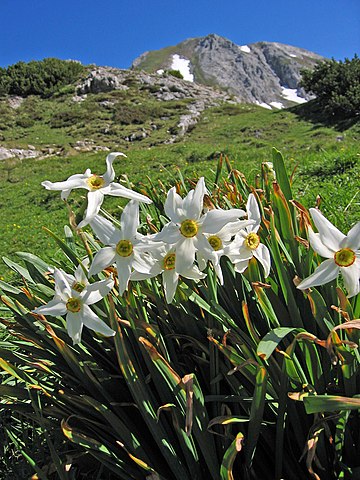Daffodils (Narcissus) are beloved spring-blooming flowers known for their cheerful colors and trumpet-shaped blooms. Growing daffodils in your garden is a rewarding experience that brings vibrant colors to your outdoor space. Here’s the ultimate guide to help you successfully grow daffodils:
1. Choosing Daffodil Varieties:
- Trumpet Daffodils: Classic, large-flowered varieties with a central trumpet.
- Jonquil Daffodils: Fragrant flowers with multiple small blooms per stem.
- Miniature Daffodils: Small in size, perfect for rock gardens or containers.
- Double-flowered Daffodils: Varieties with multiple layers of petals for a fuller look.

2. Planting Time:
- Fall Planting: Daffodil bulbs are typically planted in the fall, several weeks before the ground freezes.
- Early Spring Planting: In regions with milder winters, you can also plant in early spring.
3. Site Selection:
- Sunlight: Daffodils prefer full to partial sunlight. Plant them where they will receive at least 6 hours of sunlight per day.
- Well-Drained Soil: Ensure the soil is well-drained to prevent bulb rot. Sandy or loamy soil is ideal.
4. Soil Preparation:
- Amend Soil: Mix organic matter like compost into the soil before planting to improve fertility and drainage.
- Soil pH: Daffodils prefer slightly acidic to neutral soil pH.
5. Planting Depth:
- Depth Guidelines: Plant daffodil bulbs about 6-8 inches deep. Taller varieties may require deeper planting.
6. Spacing:
- Spacing Guidelines: Plant bulbs 4-6 inches apart. Larger bulbs should have more space.
7. Watering:
- Moisture Requirements: Water the bulbs well after planting to settle the soil. Daffodils prefer consistently moist soil but can tolerate dry periods once established.
- Avoid Waterlogging: Ensure proper drainage to prevent waterlogged soil, which can lead to bulb rot.
8. Mulching:
- Mulch Application: Apply a layer of mulch after planting to help regulate soil temperature and retain moisture.
9. Fertilizing:
- Spring Fertilization: Apply a balanced fertilizer in early spring when shoots emerge.
- Avoid High Nitrogen: Avoid high-nitrogen fertilizers, as they can encourage foliage growth at the expense of flowers.
10. Deadheading:
- Remove Spent Flowers: Deadhead daffodils by removing faded flowers but leave the foliage intact until it turns yellow. This allows the bulb to store energy for the next blooming season.
11. Pest and Disease Management:
- Rodent Protection: Daffodil bulbs are often deer-resistant, but rodents may be attracted to them. Protect bulbs from rodents if necessary.
- Aphid Control: Keep an eye out for aphids and control them with insecticidal soap if needed.
- Fungal Diseases: Ensure good air circulation to prevent fungal diseases.
12. Naturalizing:
- Naturalize in Lawns: Daffodils are excellent for naturalizing in lawns. Allow the foliage to mature before mowing.
13. Division:
- Division Schedule: Every 3-5 years, consider lifting and dividing crowded clumps of daffodils after the foliage has died back.
14. Container Gardening:
- Container Size: Daffodils can be grown in containers. Choose large containers with drainage holes, and plant bulbs at the appropriate depth.
By following these guidelines, you can enjoy a spectacular display of daffodils in your garden each spring. Daffodils are generally low-maintenance, and their bright, cheerful blooms herald the arrival of the growing season.











